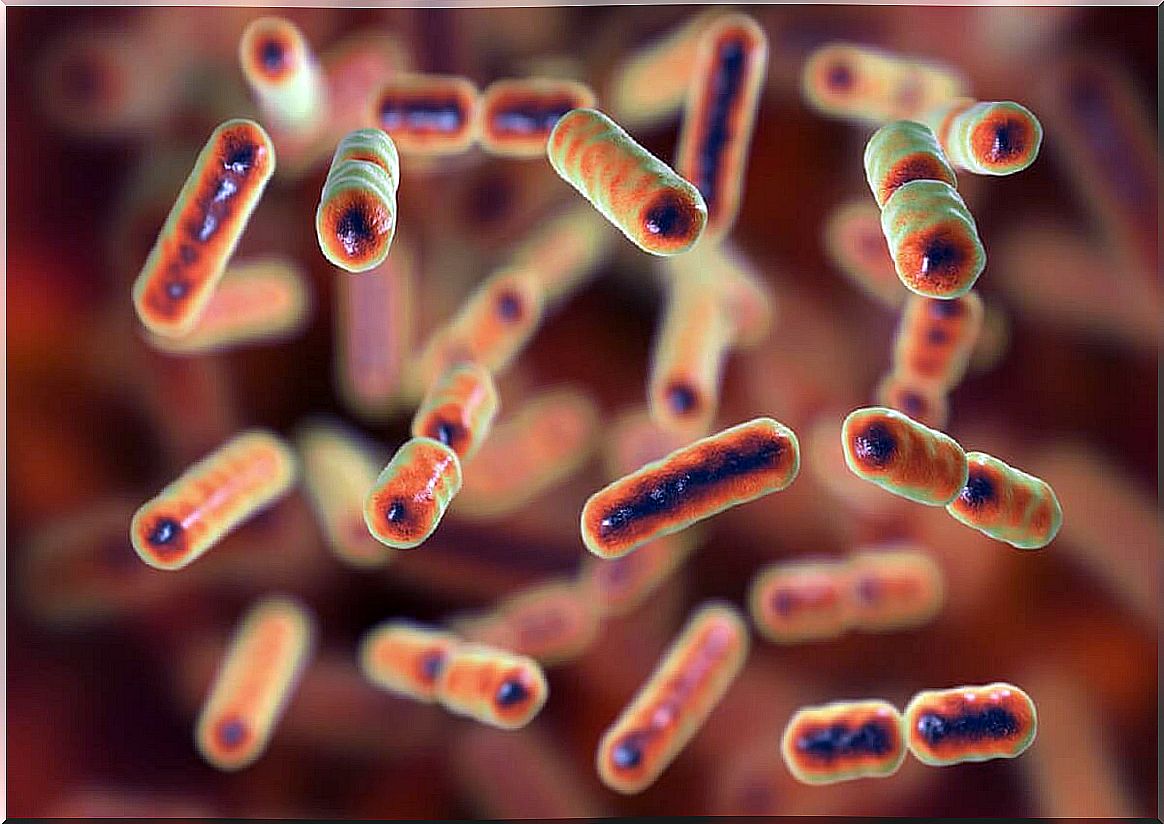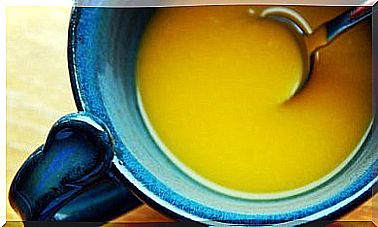How To Know If The Intestinal Flora Is Damaged?
Symptoms such as unexplained abdominal bloating, prolonged periods of diarrhea, constipation, and foul-smelling stools may be indicative of impaired intestinal flora.
This community of microorganisms is essential in the proper functioning of the human body, since as various studies have underlined, it promotes the digestion of food substances and the specialization of the immune system , among other functions.
Do you know why an imbalance of the gut microbiota can happen? Have you ever wondered what to do if the intestinal flora is damaged? Resolving all of this is essential for proper functioning of the intestinal tract and general well-being. Therefore, here we tell you everything you need to know about the subject.
About dysbiosis
The imbalance of the intestinal flora responds to a specific term, dysbiosis. As microbiological studies have collected, this word refers to the imbalance of the normal microbiota, due to qualitative or quantitative changes in its composition, in its functioning, distribution or metabolic activities.
There are three types of dysbiosis:
- Loss of beneficial bacteria for the functioning of the gastrointestinal tract.
- Overgrowth of human pathogenic bacteria.
- Loss of a general bacterial biodiversity.
The normal microbiota is the set of bacterial microorganisms that populate various areas of the human body and, without a doubt, the most relevant is the one present in the gastrointestinal tract.
According to the study cited above, there are more than 10 14 bacterial cells in the intestine, with more than 1000 different species. The Bacterioidetes and Firmicutes groups are the dominant ones.
In a healthy individual, there is a balance between intestinal bacterial colonies, as these self-regulate among them, and the host’s immune system also maintains normality.
When this homeostatic balance is broken, either by external or internal factors, the aforementioned dysbiosis occurs. This leads to a series of complications that we will see below.

How to know if the intestinal flora is damaged?
As we already anticipated, microbiological studies show that the intestinal microbiota stimulates the immune system, synthesizes vitamins, inhibits pathogens and digests compounds from plants, among other functions.
These microorganisms are essential in the proper functioning of the gastrointestinal tract, and therefore keeping them in balance is essential.
Causes of an intestinal dysbiosis
There are several causes that can generate an imbalance in the normal microbiota. Here are some examples:
- The use of antibiotics to fight bacterial infections can lead to imbalances in the microbiome. Ampicillin or amoxicillin, among others, have been shown to have negative effects on the composition of the intestinal flora.
- Studies carried out in animals have determined that stress and anxiety cause variations in the intestinal microbiota for several days. Stressful states decrease the production of intestinal mucin (protective layer of the tissue), which promotes the adherence of pathogens.
- Other sources stress that diet plays an essential role in the microbiota. Sulfate foods, for example, promote the growth of pathogenic bacteria in the intestinal tract. It is also believed that high protein diets can have negative effects.
All of these factors are important in people in normal health. Immunocompromised individuals or individuals with associated pathologies are also in risk groups, as their immune system may not adequately regulate the growth of pathogenic bacterial species.
Finally, as detailed in an article published in Psychopharmacology , the use of drugs, alcohol and tobacco also seems to have negative effects on the microbiome.
Symptoms of an intestinal dysbiosis
Knowing if the intestinal flora is damaged is not an easy task, since many of the apparent symptoms are similar to those produced by other gastrointestinal diseases. Among them are the following:
- Abdominal swelling and gas for no apparent reason.
- Intestinal cramps, ventral punctures and a feeling of tightness.
- Stools and gases with a special bad smell.
- Alternating periods of constipation or diarrhea.
- Greater vulnerability to viral and bacterial infections.
In addition, the commented studies suggest that there are more serious diseases that may be linked to intestinal dysbiosis. Pathogenic strains such as Escherichia coli, Mycobacterium avium paratuberculosis or Clostridium difficile seem to be related to these imbalances.

What to do with intestinal dysbiosis?
If the person who suffers from it is not taking antibiotics or has associated pathologies, making a change in diet is essential to recover a healthy flora. Probiotics, for example, are a proven method of boosting gastrointestinal wellness.
These are usually composed of strains of the bacteria Bifidobacterium and Lactobacillus , natural inhabitants of the intestinal tract. Some examples of probiotics are kefir, kombucha, and other lacto-fermented foods. They can also be given in pills.
Prebiotic foods, that is, normal foods that promote bacterial growth, will also help repopulate damaged flora. Foods with fiber and starch are examples of this. Of course, consulting with your family doctor or a dietician before adopting drastic changes in diet will always be a good idea.
What to remember about damaged intestinal flora?
Unhealthy habits such as smoking, drinking and taking drugs can modify the gastrointestinal microbiota, among many other associated pathologies. In addition, continued stress can cause an imbalance of this group of bacteria present in the intestine.
It has also been observed that the use of antibiotics can cause dysbiosis, but, unfortunately, these types of side effects cannot be controlled by the patient. In any case, a healthy lifestyle and the use of probiotics and prebiotics can help maintain and restore gastrointestinal well-being.









